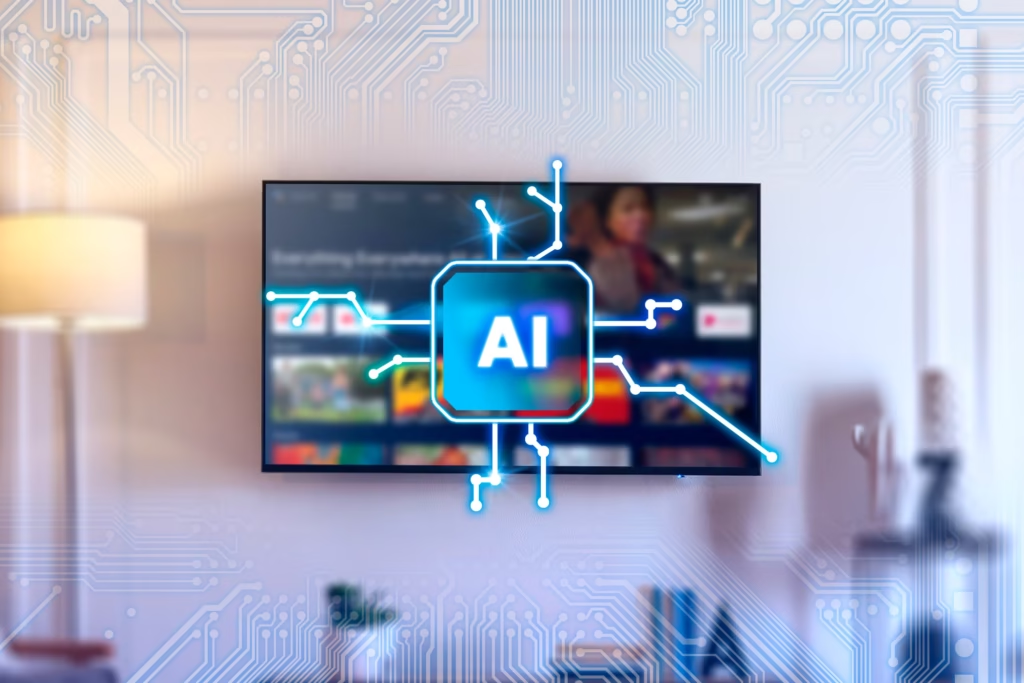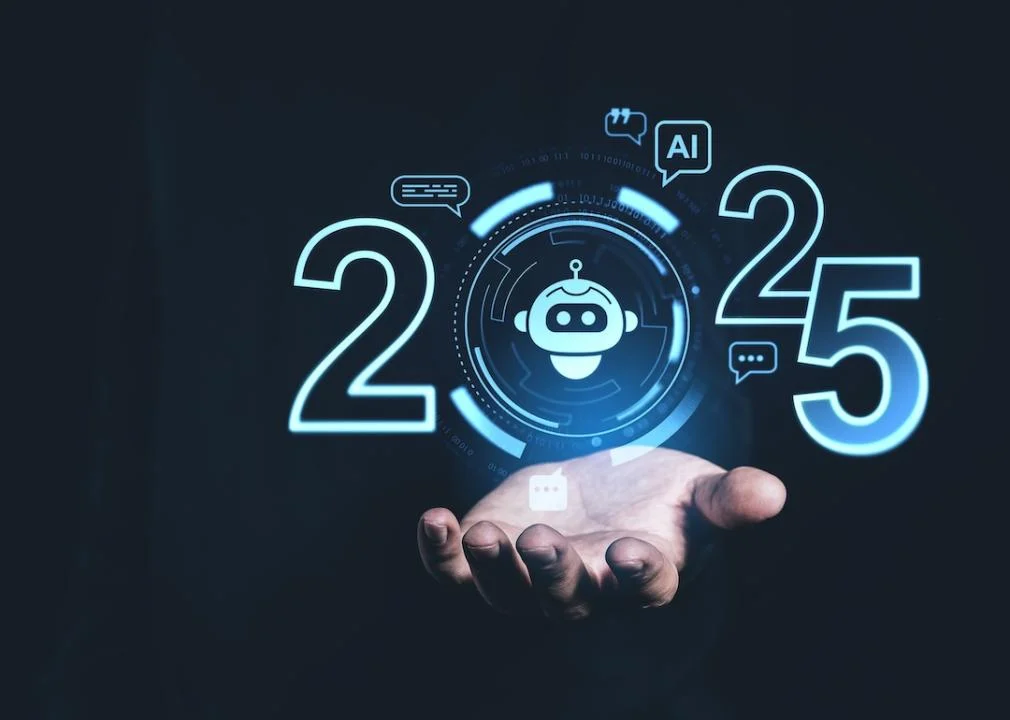Introduction
Artificial Intelligence (AI) has become a central pillar in the evolution of various industries, and the consumer electronics market is no exception. Over the last few years, AI has significantly transformed the way people interact with technology, making devices smarter, more intuitive, and capable of providing personalized experiences. From smartphones and smart TVs to home assistants and wearables, AI has revolutionized consumer electronics, not only enhancing user experience but also creating new opportunities for innovation.
This article explores the integration of AI in consumer electronics, its impact on the industry, and how it is shaping the future of technology.
The Rise of AI in Consumer Electronics

AI refers to the simulation of human intelligence in machines that are programmed to think and learn like humans. These intelligent systems can analyze data, identify patterns, and make decisions based on that information, often with the ability to improve over time. The rapid advancement of machine learning, natural language processing (NLP), and deep learning technologies has led to significant strides in the development of consumer electronics.
Historically, consumer electronics such as smartphones, televisions, and home appliances were limited to performing predefined tasks. However, with the integration of AI, these devices have become more adaptive, autonomous, and capable of solving complex problems. AI enables devices to understand context, anticipate user needs, and provide highly personalized experiences.
AI in Smartphones
Smartphones are perhaps the most prominent consumer electronics category where AI has made a noticeable impact. The integration of AI in smartphones has unlocked new possibilities in terms of performance, user experience, and functionality. AI-powered features in smartphones include:
- Personal Assistants: Virtual assistants such as Apple’s Siri, Google Assistant, and Amazon Alexa are powered by AI and are capable of understanding natural language. These assistants can perform a wide range of tasks such as setting reminders, answering questions, sending messages, and controlling smart home devices. They continuously learn from user interactions, improving their accuracy and efficiency over time.
- Camera Enhancements: AI has greatly enhanced the capabilities of smartphone cameras. Through machine learning algorithms, AI can automatically adjust settings like exposure, white balance, and focus to capture the best possible image. Moreover, AI-powered features like portrait mode, scene recognition, and real-time filters have revolutionized mobile photography. AI can also identify objects, enhance facial features, and even remove imperfections, making photo-editing simpler and more efficient.
- Battery Optimization: AI helps optimize battery life by learning usage patterns and adjusting power consumption accordingly. For instance, AI can prioritize background processes and limit resource-intensive apps when the battery is low, thereby extending battery life throughout the day.
- Security Features: AI plays a vital role in security on smartphones. Facial recognition, fingerprint sensors, and voice recognition are all AI-driven technologies that ensure a higher level of security. AI-based fraud detection systems are also used to prevent unauthorized access to sensitive data and accounts.
AI in Smart TVs and Entertainment Systems

AI is increasingly becoming a key feature in modern smart TVs and entertainment systems. These devices have evolved from simple displays to complex, interactive systems that provide a personalized viewing experience. Some of the most significant AI-driven features in smart TVs include:
- Personalized Recommendations: AI algorithms analyze user preferences and viewing habits to provide tailored content recommendations. For example, Netflix and YouTube utilize AI to suggest movies, shows, and videos based on what users have watched previously. The more data the system collects, the better it becomes at predicting content that a user will enjoy.
- Voice Control: Many modern smart TVs are equipped with voice assistants, allowing users to control their TVs using voice commands. AI-powered virtual assistants can turn the TV on or off, change channels, adjust volume, and search for content, making it easier to interact with the device.
- Image and Sound Enhancement: AI is used to enhance the visual and auditory quality of TV content. AI-powered image processing can automatically adjust brightness, contrast, and sharpness, ensuring optimal picture quality in different lighting conditions. Similarly, AI-based sound optimization can adjust audio settings for better clarity and surround sound, depending on the type of content being played.
- Smart Home Integration: Many smart TVs are integrated with AI-powered smart home ecosystems, allowing users to control other connected devices like lights, thermostats, and security cameras from their TV screen. These devices communicate with one another, creating a seamless, interconnected smart home experience.
AI in Wearables and Fitness Devices
Wearable devices such as fitness trackers, smartwatches, and health monitoring devices have become increasingly popular, and AI is playing a pivotal role in enhancing their capabilities. AI has enabled wearables to go beyond simple health tracking and become sophisticated tools for managing personal well-being. Some of the most prominent applications of AI in wearables include:
- Health Monitoring: AI algorithms can analyze data collected from sensors in wearables to provide insights into a user’s health. For example, smartwatches with heart rate monitors can detect abnormal heart rhythms, while fitness trackers can assess sleep patterns and stress levels. These AI-driven features can alert users to potential health concerns, encouraging them to take proactive measures.
- Personalized Fitness Plans: AI can analyze a user’s fitness data and create customized workout plans based on their goals, fitness level, and progress. AI-powered devices can also track improvements, adjust the intensity of workouts, and suggest new exercises to help users reach their targets.
- Predictive Analytics: Some wearables use AI to predict health trends. For instance, a smartwatch may analyze long-term data to predict potential health issues such as the risk of cardiovascular diseases, enabling users to take preventive action.
AI in Smart Home Devices

AI has made its mark in the smart home industry, transforming traditional homes into intelligent, connected environments. Devices like smart thermostats, lighting systems, security cameras, and voice assistants rely on AI to learn user behavior, adapt to preferences, and automate household tasks. Some examples of AI-powered smart home devices include:
- Smart Thermostats: AI-powered thermostats, such as the Nest Thermostat, learn user habits and adjust the temperature accordingly. They can detect when the house is occupied or vacant and optimize energy usage to ensure comfort while reducing energy bills. Over time, these devices adapt to a user’s routine, anticipating when they’ll be home and adjusting the climate settings before they arrive.
- AI-powered Security Cameras: Smart cameras equipped with AI can detect and recognize faces, distinguish between people and pets, and even identify suspicious activities. These cameras can alert homeowners to potential security threats in real-time, enhancing home security.
- Voice-controlled Smart Assistants: AI-driven virtual assistants, such as Amazon Echo and Google Home, are at the core of many smart home ecosystems. These assistants can control various connected devices, such as lights, locks, and appliances, through simple voice commands. They can also provide information, play music, set reminders, and perform other tasks.
- Smart Lighting: AI-enabled lighting systems can automatically adjust brightness and color based on the time of day, user preferences, and even the activities taking place in a room. For example, AI can detect when a user enters a room and turn on the lights or change the lighting to suit the mood of the environment.
AI in Consumer Electronics Retail and E-commerce
Beyond individual devices, AI is also transforming the retail experience in the consumer electronics industry. Retailers and e-commerce platforms are leveraging AI to optimize product recommendations, improve customer service, and streamline operations. Some key applications of AI in consumer electronics retail include:
- Personalized Shopping Experience: AI algorithms can analyze customer behavior, preferences, and purchase history to offer personalized product recommendations. This can be seen on e-commerce platforms like Amazon, where AI-driven algorithms suggest products based on previous searches and purchases. Similarly, brick-and-mortar stores use AI to enhance in-store experiences through personalized promotions and discounts.
- Chatbots and Virtual Assistants: AI-powered chatbots and virtual assistants are increasingly being used to handle customer inquiries, assist with product selection, and provide post-purchase support. These systems can provide immediate assistance, enhancing customer satisfaction and reducing the need for human intervention.
- Inventory Management: AI is helping retailers optimize inventory levels and streamline supply chains. Machine learning algorithms can predict product demand, adjust inventory accordingly, and help ensure that popular items are always in stock, reducing the likelihood of stockouts or overstocking.
The Future of AI in Consumer Electronics
Looking ahead, the role of AI in consumer electronics is poised to grow even further. As AI technologies continue to evolve, devices will become even smarter and more capable. Here are some potential future developments:
- More Natural Interactions: Future AI systems will be able to understand and respond to human emotions, making interactions more natural and empathetic. For instance, AI in devices may be able to detect frustration in a user’s voice and provide assistance accordingly.
- Advanced Personalization: AI will continue to refine personalization, with devices able to anticipate user needs before they even arise. For example, a smart home assistant may automatically adjust the lighting and temperature when it detects a user’s arrival, without being prompted.
- Increased Integration Across Devices: As AI-powered devices become more interconnected, there will be greater integration across various consumer electronics. A user’s smartphone, wearables, smart home devices, and entertainment systems will work seamlessly together, creating a unified, intelligent environment.
- AI-Driven Consumer Electronics Development: AI will also play a key role in the development of new consumer electronics. By analyzing user data and feedback, AI systems can help design and create devices that are more intuitive, efficient, and suited to the needs of the consumer.
Conclusion
AI has undoubtedly transformed the consumer electronics industry, enhancing the functionality, usability, and efficiency of devices across a wide range of categories. From smartphones and smart TVs to wearables and smart home systems, AI has made these devices more intelligent, adaptable, and personalized. As AI continues to evolve, the future of consumer electronics holds exciting possibilities, with even smarter and more interconnected devices on the horizon. The integration of AI is not only improving everyday experiences for consumers but also driving innovation, setting the stage for a future where technology is more intuitive, responsive, and seamlessly integrated into our lives.
For More Articles VISIT HERE






Leave a Reply